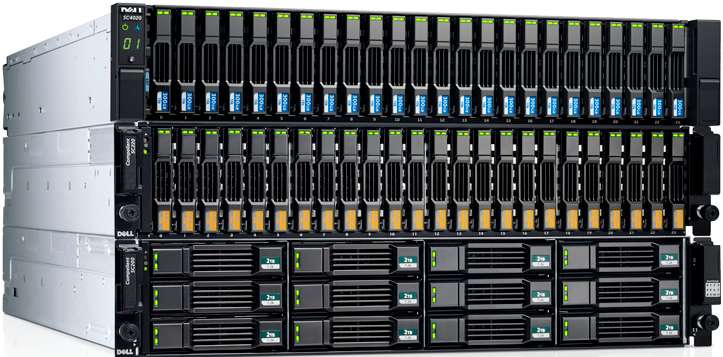
Have there been instances where you needed your computer but it stopped working for you? When your computer malfunctions, it can be very annoying to work on your projects. This is the reason for your need for a reliable system to store and manage your data.
A SAN, or Storage Area Network, happens to be one of the best options provided for such needs. It keeps your data safe, organized, and, most importantly, always accessible.
In recent years, the market for storage area network (SAN) solutions has experienced significant growth. It will increase at a compound annual growth rate (CAGR) of 5.8% from $20.91 billion in 2024 to $22.13 billion in 2025.
But it takes more than just having a SAN to keep it functioning properly. It requires the key strategies listed to work together.
Below in this article are seven essential tactics that could help you maximize uptime in a reliable SAN. These measures will ensure data availability when the need arises the most.
1. Select the Right Hardware for Robust Foundation
Just like a house with weak walls would easily fall, the same happens to SAN storage. Hardware matters a lot for your storage performance.
-
High-Quality Components
A storage device is not the same for all others. Some are faster, stronger, and last longer. Pick hard drives and SSDs, as well as controllers that offer speed and durability.
-
Redundant Components for extra safety
A single failure should not bring down your entire system. Redundant components such as dual power supplies and multiple network connections keep your SAN running even if one part fails.
2. Regular Maintenance Keeps Your SAN Healthy
Just like checking your car regularly, your SAN requires regular monitoring to maintain optimal performance. If the SAN lacks checkups, problems may arise without you being able to notice them until it is too late.
- Configure alerts for performance degradations or hardware failures.
- Ensure that the SAN is with updated software to avoid bugs.
- Hardware and connections should be tested regularly to catch small problems before they build up into big ones.
Keep an eye on your SAN, and you will not be surprised by its slowness, which is sure to be
Working at full speed, ready for you whenever you need it.
3. Protect Your SAN from Cyber Threats
A house needs locks to keep it safe, and so does the SAN that keeps the data safe.
With an average of 97 cybercrime victims per hour, this means there is a victim of cybercrime every 37 seconds.
If your SAN is not secured properly, it can become a target, and your valuable data may be at risk. Just as locks protect your home from burglars, so do strong security measures protect your SAN from cybercriminals.
-
Firewall and Antivirus Software Configuration
Storage attacks usually result from viruses and hackers. Great firewall software, as well as updated antivirus software, will help secure your SAN.
-
Assign Relevant Access Permissions
Not everyone requires full SAN control. Access should only be granted to users with a need to do so. Accidents or deliberate damage will be prevented in this way.
4. Automate Backup Procedures to Avoid Data Loss
Backups are very important. You spend so much time on a project and then suddenly, your computer crashes. And there goes all your work because you did not have a backup. The same can happen to SAN storage if you do not regularly back up your data. Therefore, it is important to automate backups.
- Create automatic backups to run at intervals, say, once a day or weekly.
- Store your backups in multiple locations, either on the cloud or an external server, to avoid losing everything in one place.
- Check the backups to make sure they work and that data can be recovered when needed.
5. Make Plans for Future SAN Growth
Your needs today may well not be the same as your needs tomorrow. As your business or personal storage requirements grow, so do your SAN needs. A good SAN should grow without gradually slowing down or creating problems.
- Plan ahead by regularly evaluating your storage needs.
- Add more storage space or upgrade hardware as needed to meet growing demand.
- Ensure that your SAN is scalable; that is, it grows with your data needs.
Planning ahead for your future can ensure your SAN stays right with you and does not develop any problems in the long term.
6. Train Your Staff to Handle SAN Issues
Sometimes, problems occur that cannot be avoided. In these cases, the ability to quickly respond is what matters. Training the people who actually use the SAN can help solve problems quicker and avoid long periods of downtime.
-
Teach Staff About Best Practices
Ensure your team knows how to handle the SAN properly. Good training helps eliminate mistakes that lead to failures.
-
Have a Quick Response Plan
In case of problems, a quick response can prevent downtime. Train your team to respond to emergencies effectively.
The Final Thoughts
Your SAN is the backbone of your data storage. Keeping it up and running requires smart planning and regular care. By choosing strong hardware, maintaining it properly, securing it from threats, and having a solid backup plan, you can ensure your storage system runs smoothly.
A well-optimized network, future-ready expansion plans, and a well-trained team complete the strategy for maximum uptime. If you follow these six steps, your SAN storage will function consistently and dependably every day.






